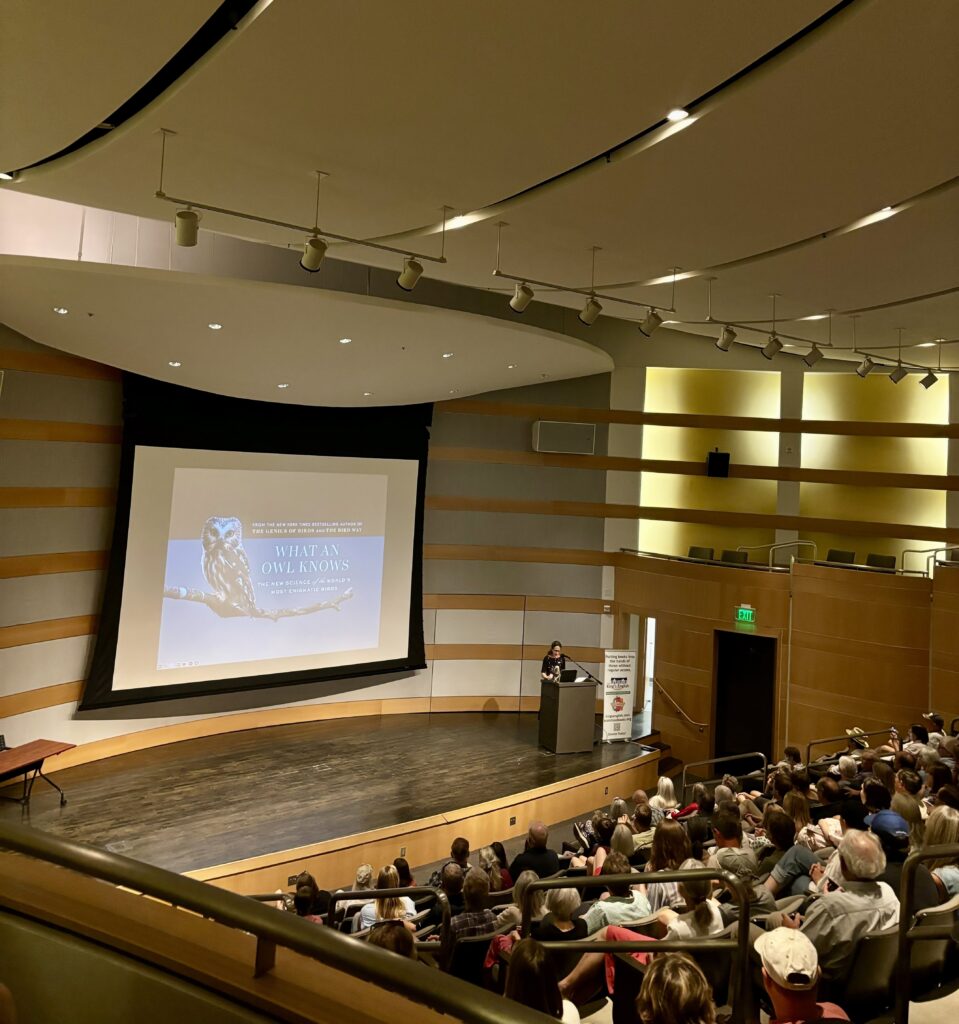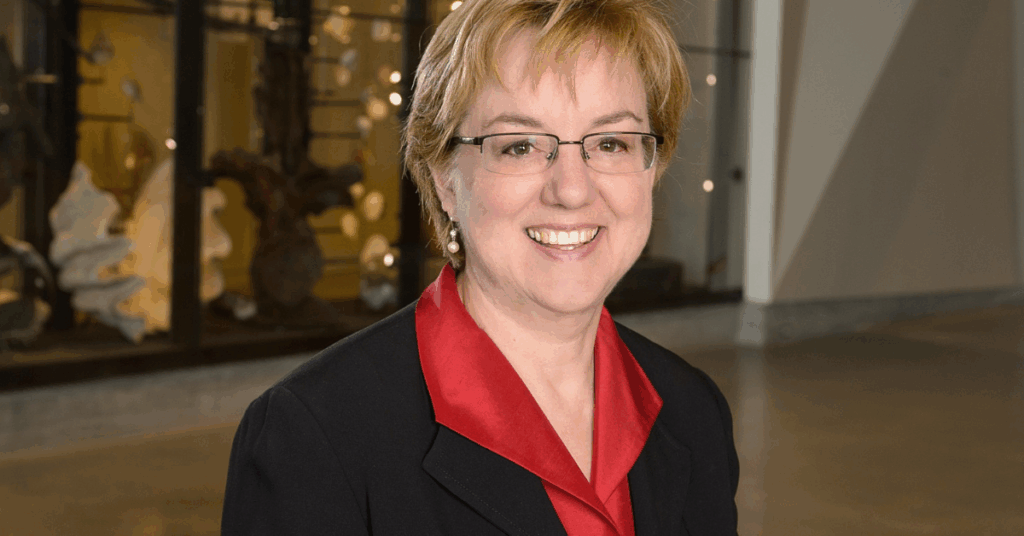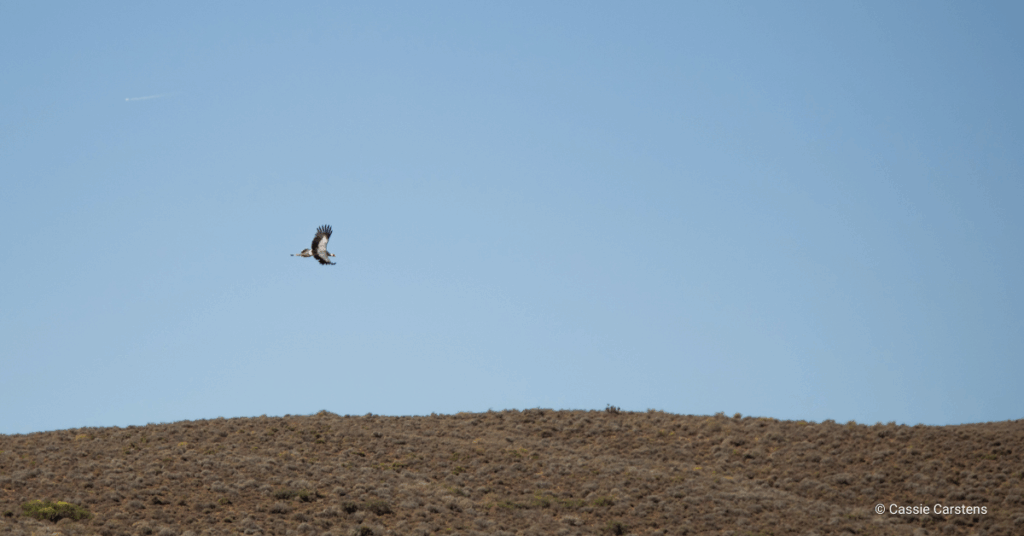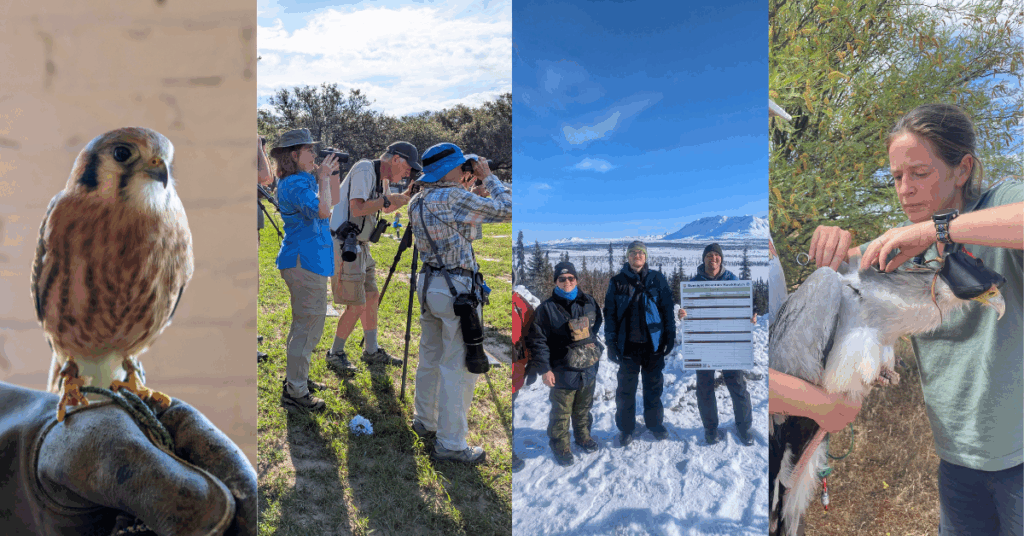One of the most surprising things I learned when I first started working at HawkWatch International is how little we know about owls. Perhaps one of the most well-loved groups of birds, owls are featured heavily in pop culture, art, and poetry. According to New York Times best-selling author Jennifer Ackerman, owls are mentioned in more myths and folklore than any other bird! So, how could we know so little about these birds? Lucky for us, Jennifer was curious about this as well.
Jennifer Ackerman joined us in Salt Lake City last week to share what she learned while writing her latest book, “What an Owl Knows. And it was a hoot—quite literally. During a section of her presentation dedicated to sharing research into the sophisticated communication of owls, our Great Horned Owl Ambassador couldn’t help but get in on the fun. As he heard Jennifer play calls from a Great Horned Owl—demonstrating some of the 15 separate vocalizations researchers have discovered they make—Kotori began talking back to the recordings! Because owls’ hoots are as individual as your fingerprints, they can distinguish between kin, mates, allies, and rivals. If only we’d had a researcher in the room to interpret Kotori’s calls!
Although there are still many mysteries about owls, the research Jennifer shared with us highlights the tireless efforts to understand these incredible birds. From simply knowing how many of each species exist to understanding the factors influencing their reproductive success, researchers are working to close these knowledge gaps for the benefit of owls.

But it isn’t just owls that benefit from this research. With numerous adaptations and unique characteristics, owls can teach us much about our own lives, too. Together, the soft, velvety fibers coating owls’ wings and the comb of bristles that disrupt turbulence in flight, permit owls to soar through the air in silence. Designers have learned these features how to reduce the noise pollution caused by wind turbines, aircraft, and bullet trains.
When asked what owls have taught her, Jennifer answered that owls have reinforced that you can move quietly through the world and still make an impact. There is value in sitting back, listening, and observing, rather than standing out. If people lived a bit more like owls do, then maybe owls would not be facing the results of humans living loudly. Whether it be literal noise pollution or habitat loss, we have caused so much damage by taking up so much space.
We are so glad that Jennifer was able to join us and share more about What an Owl Knows, years after we were first introduced to her at the World Owl Conference. From sharing more about our research on small cavity-nesting forest owls to collaborating with Jennifer on this event, we’re so grateful for the opportunity to raise awareness for these charismatic creatures and all the mysteries they still hold. You can learn more about owls by picking up a copy of Jennifer’s book from your favorite local bookstore or joining us as a community scientist!
Thank you to our partners at The King’s English and the Salt Lake City Public Library for helping us host such a magical event. We were able to offer this program for free thanks to our sponsors Rocky Mountain Power, Kaddas Enterprises, Mark Miller Subaru, Birds & Wine, and a private donor who wishes to remain anonymous.
his blog was written by Sammy Riccio, our Communications Manager and Kirsten Elliott, our Director of Development and Communications. You can learn more about Sammy here and Kirsten here.



